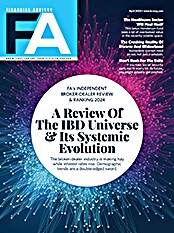The United States’ economy is roaring ahead, and above-trend GDP growth looks set to continue in 2018 and 2019. Although the expansion is in its ninth year, there is no sign of an imminent slump.
The greatest risk to the economic expansion is the fragility of the financial sector. A decade of excessively low interest rates has pushed asset prices to extreme heights. The real yield on ten-year Treasury bonds is approximately zero. The price-earnings ratio of the S&P 500 share index is about 70% above its historic average. If these and other asset prices reverted to their historic benchmarks, investors would suffer losses in excess of $10 trillion, leading to declines in consumer spending and business investment.
Economic activity could also slow as a result of international conflict in Korea, heightened trade disputes, or domestic political events in the US.
Downturns are a normal feature of the US economy, which has experienced nine recessions during the last 50 years. What makes the current situation unusual and more worrying than in the past is the low level of short-term interest rates, which limits the ability of the US Federal Reserve to bring monetary policy to bear in countering the next recession.
The Fed traditionally responds to a downturn by sharply reducing the short-term federal funds rate. During the most recent downturn, the Fed lowered the benchmark rate from over 5% in July 2007 to just 0.16% in December 2008, a total reduction of more than five percentage points. At only 1.4% now, the Fed has little scope for a significant rate reduction. At its meeting in December, the Federal Open Market Committee’s median forecast for the federal funds rate at the end of 2019 was still a very low 2.9%.
To stimulate demand in the last downturn, the Fed also practiced what it called “unconventional monetary policy,” promising to keep short rates low for a long time and buying long-term bonds for its own portfolio. This strategy was aimed at keeping long-term interest rates low enough to boost demand for equities and real estate, and thereby increase wealth and spending. It is not clear that this strategy would provide the hoped-for stimulus as long as real interest rates remain low.
The responsibility for stimulating the economy in the next downturn will therefore fall to fiscal policy – changes in taxes and government spending.
A new temporary tax cut would not work. Experience shows that a temporary cut in personal income taxes would provide very little stimulus, because most taxpayers would use the resulting extra net income to pay down debt or increase their savings, rather than spending more.
But the 2017 tax law provides an opportunity for a permanent tax cut by preserving the cuts that are now scheduled to expire in 2025. The Republicans who designed and voted for the 2017 law expected to extend those cuts beyond 2025 in subsequent legislation. An economic downturn in the next few years would be a good time to make the cuts permanent.
The other way to reverse an economic downturn would be to increase government spending. There is now widespread bipartisan support for increased spending on infrastructure of all kinds, just as there was in the 2007 downturn. Although the Obama administration spoke about “shovel ready” projects when promoting its putative stimulus legislation, the reality was that very little of the money was spent on infrastructure, owing to the long delays involved in implementing such projects.








